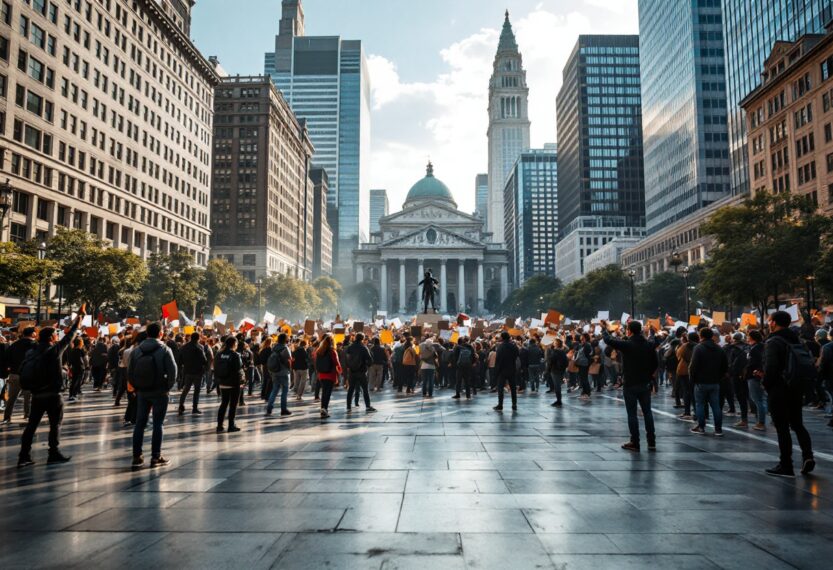In a remarkable display of civic engagement, millions of Americans took to the streets over the weekend, participating in more than 1,200 peaceful demonstrations across all 50 states. This surge of activism, occurring just 75 days into Donald Trump’s second presidency, underscores a significant shift in public sentiment, transcending traditional political boundaries.
Widespread discontent among constituents
According to data journalist G. Elliott Morris, interest in protests has reached levels not seen since the summer of 2020, particularly during the racial justice demonstrations. This recent wave of activism is notable not only for its scale but also for its geographic diversity, reaching communities that have historically supported Trump. Political scientist Laura Gamboa emphasizes that this unrest is not limited to liberal enclaves, indicating a broader dissatisfaction among both Democrat and Republican constituents.
Concerns over government policies
The protests were largely fueled by concerns over Trump’s agenda, particularly his efforts to dismantle essential components of the welfare state, including Social Security and Medicare. Recent polling indicates a growing frustration among the public regarding Trump’s policies and the influence of figures like Elon Musk on American life. The “Hands Off!” protests served as a vivid reminder that Trumpism is not universally accepted, challenging the narrative that the president has a mandate to pursue his radical agenda.
The power of collective action
Historian Thomas Zimmer notes that these demonstrations are crucial in debunking the myth of Trump’s popular support. They serve as a powerful reminder that public defiance is possible and can foster a sense of community among individuals who may feel isolated in their dissent. The urgency of these protests is amplified by the upcoming elections, with every seat in the House of Representatives up for grabs in November 2026. As Trump navigates his presidency, the visual impact of these protests may serve as a critical reminder to Republicans of the potential consequences of their policies.
As grassroots movements gain momentum, they connect individuals to larger activist networks, creating a foundation for sustained political engagement. The protests not only reflect current frustrations but also signal a call to action for political leaders who have failed to resist the encroachment of authoritarianism. In a time when American democracy is perceived to be at risk, the collective action of citizens may prove to be the most effective means of safeguarding democratic values.

